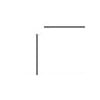Print marks play an important role within the world of print and need to be applied to any piece of artwork intended to be printed.
These added marks help people like us understand what should be done with the document, without or if incorrectly applied; mistakes can be made that cost you both time and money.
Effectively it’s a quality control mechanism, helping to achieve that professional print and finish your design deserves, the only finish that we at Evans Graphics accept.
Added within the design stage, pre-print; the marks have an important job to guide and inform the printer. The marks provide key and necessary instruction on size and colouring, resulting in the delivery of an accurate and consistent print.
Though essential these marks are often added without understanding, which can cause confusion and lead to costly mistakes.
Rather than add them all and hope for the best, see our guide to the most important and frequently used print marks:
 1. Crop Marks (trim marks)
1. Crop Marks (trim marks)
These are fine horizontal and vertical lines placed at the corners of your piece of artwork.
These lines indicate where to trim your finished project so nothing important is affected and cut off the final finished piece.
 2. Bleed Marks
2. Bleed Marks
Bleed marks look like faint rules that define the amount of extra area the design sits outside the set page size. This will be trimmed and ensures the print will be edge to edge.
A design with a bleed is one where the artwork extends a minimum of 1/8" past the edge of the finished design. The industry standard bleed is 3mm.
The bleed acts as a safety margin when trimming out, and provides the printer sufficient extra ink to allow for slight movement when finishing or trimming up.
Click here to learn more about Bleed Marks.
 3. Registration Marks
3. Registration Marks
These target looking marks sit outside of the page area and they accurately align the printing plates on top of each other. Often found on each side of your piece.
Registration marks will appear on each plate, and they should be aligned to overlap perfectly for quality results.
There are a few versions of registration marks though the most common and recognised are the "crosshairs" or "target" styled.
Registration marks also help aid to better align cuts when trimming, ensuring greater definition.
 4. Colour bars (densitometer scales)
4. Colour bars (densitometer scales)
Are small squares added of colour representing the CMYK inks.
To adjust ink densities on the printing press, one colour bar is used and marked for each printing ink in the process to deliver the final piece.
Colour bars will allow the evaluation of the quality of the printed material relative ink density, registration and dot again.
 5. Star target
5. Star target
The star target appears next to the colour bar helping to detect any inconsistencies in the ink spread across your piece of print.
Each printing mark serves a purpose for those who know what they are looking for, here at Evans Graphics quality control is our highest priority and we are determined to get you the very best results.
We are happy to discuss your project further and talk you through the requirements and advise you further on the print marks you may require.
Confident you now understand the difference between printer marks? Move onto DPI.


